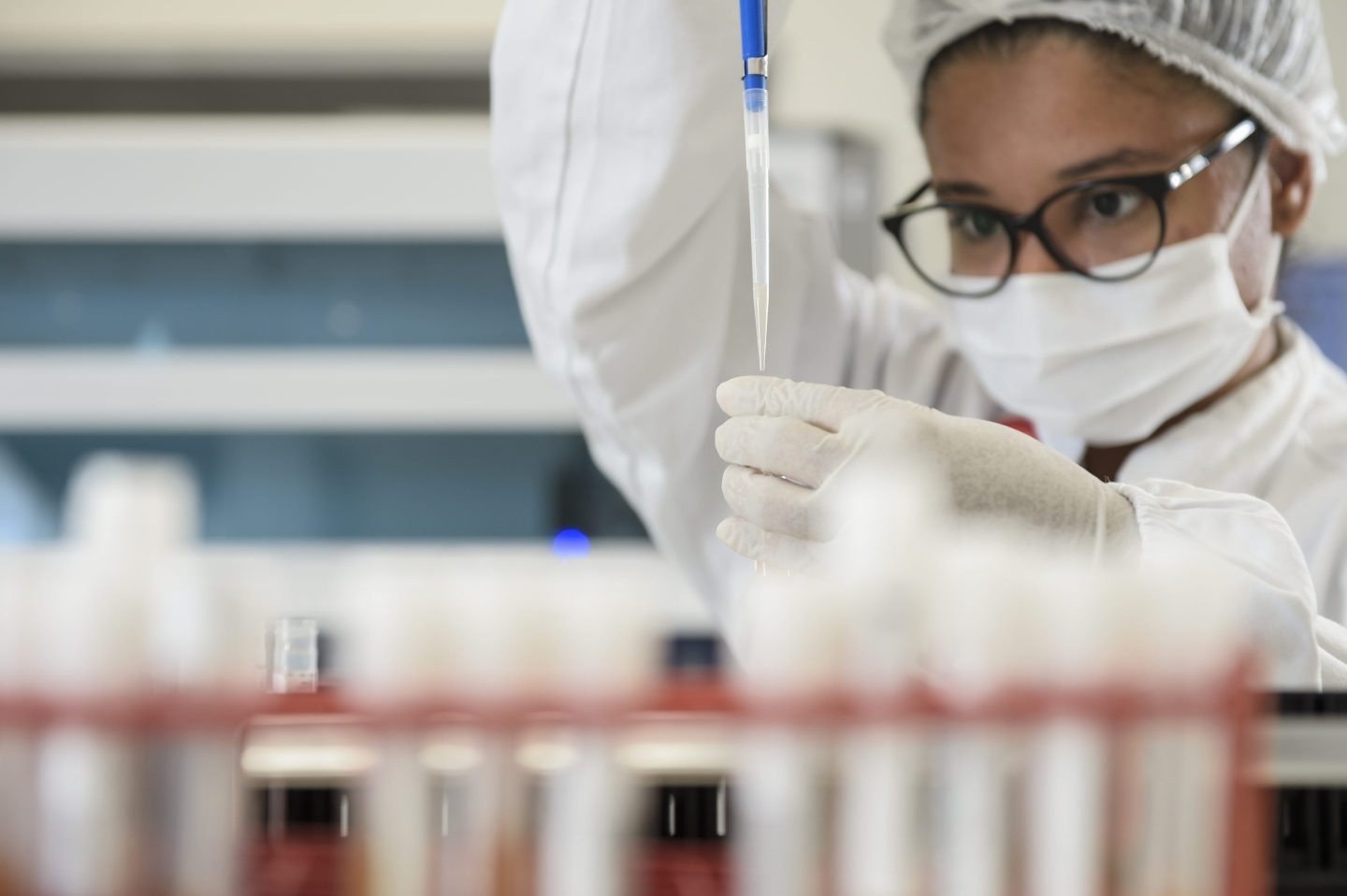As an avid sports fan, I was deeply saddened to read the news of tennis star Chris Evert’s early-stage ovarian cancer diagnosis. Her announcement is an important reminder that everyone needs to have access to the right medical care, be vigilant and prioritize check-ins that can help catch a disease in its early stage.
What we achieved during the pandemic shows us that we have the chance to reinvent health care as we know it. With 9.5 million people around the world dying from cancer alone each year, we must bring that similar, intense focus to the fight against this disease and others, just as we prioritized COVID.
These health care imperatives have far too often been neglected throughout the pandemic. A recent Nature article highlighted an increase in mortality resulting not from COVID-19 infections, but rather the pressures the pandemic has placed on our society and our healthcare systems. Some estimate the pandemic’s knock-on effects will take years to be reversed, due to postponed clinical trials, and fewer cancer screenings and diagnoses.
New avenues for innovation
Explosive technological advancement over the past decade has given birth to a completely new world of drug discovery and design. New modalities and novel platform technologies are increasingly becoming a reality.
Genomic medicine is moving to the forefront, with gene therapies emerging and mRNA vaccines sparking phenomenal innovation. RNA is also being explored in hundreds of clinical trials of potential treatments for diseases spanning cancer, respiratory, and cardiovascular disease. In fact, it is estimated that about 15% of new treatments are forecasted to come from these new modalities.
However, recruiting people to participate in research is often difficult, time-consuming, and costly–especially when the patient populations are small. New tools are needed to address these obstacles. For example, we can explore tools that model “digital twins” of enrolled patients because it allows us to be far more efficient in our research. In-silico approaches also let us test hypotheses early, which can cut both time and costs. By working closely with regulatory authorities, we can begin to disrupt and transform the clinical trial process.
Unorthodox partnerships
To fully take advantage of innovation, we need a new approach to partnerships. The healthcare industry came together in unprecedented ways to help overcome the pandemic. We saw traditional competitors collaborate to accelerate treatments and vaccines for patients, with heads of R&D departments meeting multiple times a week to discuss how to join forces.
We must maintain this greater open-source approach to science if we want to continue bringing game-changing medicines to market faster. We can’t revert to our old ways. The pharma industry traditionally prioritizes in-house innovation and acquisitions. Now, a closer and more adaptive interaction with peers, academics, and the start-up community will be essential to achieve quick wins and test new tools.
Data within companies and across the industry has been difficult to fully leverage. Silos still exist and the priority needs to be on insuring strong interoperability of data. With the emergence of WEB3.0, a more decentralized digital model underpinned by the blockchain, medical centers will keep their data onsite, while also sharing it.
The power of data
The pandemic has helped our industry work more collaboratively with regulatory authorities to update processes in ways that cut waiting time for review and approval by months, without compromising rigor.
Before, every step was time-consuming. A trial would have to be fully completed, followed by a full data review before planning for the next phase of testing could even begin. That’s why development could take between six to 12 years, with each phase lasting around two years. Now, data can be shared and analyzed in real time to help speed up the process, shortening timelines to a couple of years.
Digitalization is also transforming our relationship with patients. According to a recent survey by Deloitte, 92% of health systems hope to achieve better patient experience and outcomes by using digital tools. This includes taking a consumer-centric approach and designing experiences from a consumer’s perspective.
Our business models now need to include both personalized therapies and accompanying diagnostics and services “beyond the pill”. Wearables now use mini sensors to track heart rate, blood oxygen, and skin temperature. Healthtech tools are spreading to clothing, mattresses, and potentially earbuds. Experts forecast that the market for wearables that monitor vital signs will hit $980 million by 2024, creating an exciting future of context-based automation in healthcare.
Collaboration and digitalization have played fundamental roles in bringing COVID vaccines and therapies to market at an unprecedented rate, saving an estimated 750,000 lives in the United States and Europe alone. As an industry, we must bring the same speed and sense of urgency to all our efforts.
Paul Hudson is the CEO of Sanofi.
More must-read commentary published by Fortune:
- We need a radical new approach to tackle scientific misinformation online
- The Great Resignation’s culture conundrum
- How the European gas market fuels Putin’s obsession with Ukraine
- Arianna Huffington: It’s time to replace work/life balance with “life-work integration”
- How George Washington defeated a pandemic to save the American Revolution












